Analysis of the Spatiotemporal Heterogeneity of Various Landscape Processes and Their Driving Factors Based on the OPGD Model for the Jiaozhou Bay Coast Zone, China
Abstract
:1. Introduction
2. Materials and Methods
2.1. Theoretical Principle
2.2. The Study Area
2.3. Data Source and Processing
2.4. The Research Methods
2.4.1. Spatiotemporal Characteristics for Analyzing the Landscape Processes
2.4.2. Exploring the Spatial Heterogeneity of Each Landscape Process
2.4.3. Analyzing the Driving Factors of the Landscape Processes: The OPGD Model in the R“GD” Package
3. Results
3.1. Overall Influence of the Landscape Process on the Quantity and Space of Different Landscape Types
3.1.1. The General Quantity and Distribution of the Different Landscape Types in Each Decade
3.1.2. Influence of the Landscape Process on the Quantity and Distribution of Different Landscape Types
3.2. Quantity and Spatial Distribution of Landscape Processes in Each Decade
3.2.1. Rate of Change of the Various Landscape Processes
3.2.2. Quantity Relation and Spatial Distribution of the Landscape Processes in Each Decade
3.2.3. Quantitative and Spatial Distribution Characteristics of All the Landscape Processes
3.3. Spatial Distribution Heterogeneity of the Landscape Processes
3.3.1. Dynamic Pattern of the Landscape Processes Revealed by the Landscape Pattern Index
3.3.2. Spatial Heterogeneity of the Various Landscape Processes Analyzed Using Spatial Autocorrelation
3.4. Factors Driving the Spatial Heterogeneity of the Various Landscape Processes Obtained Using the OPGD Model
3.4.1. Important Influencing Factors Revealed by Q-Statistic
3.4.2. Results of the Geographical Detector for the Major Landscape Processes
4. Discussion
4.1. The Spatiotemporal Difference of Landscape Processes Affected by The Change of Land Use Pattern and Economic Development
4.2. Internal Relations among the Various Spatial Distribution of Landscape Processes
4.3. Natural Changes, Economic and Social Development and Planning Affecting Landscape Processes
5. Conclusions
Author Contributions
Funding
Data Availability Statement
Conflicts of Interest
References
- Déjeant-Pons, M. The European landscape convention. Landsc. Res. 2006, 31, 363–384. [Google Scholar] [CrossRef]
- Wu, J.G. Landscape Ecology: Pattern, Process, Scale, and Hierarchy, 2nd ed.; Higher Education Press: Beijing, China, 2017; pp. 17–40. [Google Scholar]
- Fu, B.J.; Chen, L.D.; Ma, K.M.; Wang, Y.L. Principles and Applications of Landscape Ecology, 2nd ed.; Science Press: Beijing, China, 2011; pp. 44–51. [Google Scholar]
- Chen, L.D.; Liu, Y.; Lv, Y.H.; Feng, X.; Fu, B. Landscape pattern analysis in landscape ecology: Current, challenges and future. Acta Ecol. Sin. 2008, 28, 5521–5531. [Google Scholar]
- Bičıík, I.; Jeleček, L.; Štěpánek, V. Land-use changes and their social driving forces in Czechia in the 19th and 20th centuries. Land Use Policy 2001, 18, 65–73. [Google Scholar] [CrossRef]
- Käyhkö, N.; Skånes, H. Retrospective land cover/land use change trajectories as drivers behind the local distribution and abundance patterns of oaks in south-western Finland. Landsc. Urban Plan. 2008, 88, 12–22. [Google Scholar] [CrossRef]
- Rong, F.F.; Tashpolat, T.; Tian, Y.; Zhang, F. Spatio-temporal Trajectory Analysis of Land Use/Cover Change in Oasis of Yutian. Res. Soil Water Conserv. 2010, 17, 259–263. [Google Scholar]
- Southworth, J.; Nagendra, H.; Tucker, C. Fragmentation of a Landscape: Incorporating landscape metrics into satellite analyses of land-cover change. Landsc. Res. 2002, 27, 253–269. [Google Scholar] [CrossRef]
- Wang, D.C.; Guo, J.H.; Chen, L.D.; Zhang, L.H.; Song, Y.Q.; Yue, Y.J. Spatio-temporal pattern analysis of land use/cover change trajectories in Xihe watershed. Int. J. Appl. Earth Obs. Geoinf. 2012, 14, 12–21. [Google Scholar] [CrossRef]
- Zhou, Q.; Li, B.; Kurban, A. Spatial pattern analysis of land cover change trajectories in Tarim Basin, northwest China. Int. J. Remote Sens. 2008, 29, 5495–5509. [Google Scholar] [CrossRef]
- Crews-Meyer, K.A. Agricultural landscape change and stability in northeast Thailand: Historical patch-level analysis. Agric. Ecosyst. Environ. 2004, 101, 155–169. [Google Scholar] [CrossRef]
- Liu, J.; Wang, D.C.; Sun, R.H. Study on spatial relevance of ecological-land loss based on change trajectory analysis method. Geogr. Res. 2020, 39, 103–114. [Google Scholar]
- Li, X.; Kuang, W.H. Spatio-Temporal Trajectories of Urban Land Use Change during 1980–2015 and Future Scenario Simulation in Beijing-Tianjin-Hebei Urban Agglomeration. Econ. Geogr. 2019, 39, 187–194. [Google Scholar]
- Wang, D.C.; Gong, J.H.; Chen, L.D.; Zhang, L.H.; Song, Y.Q.; Yue, Y.J. Comparative analysis of land use/cover change trajectories and their driving forces in two small watersheds in the western Loess Plateau of China. Int. J. Appl. Earth Obs. Geoinf. 2013, 21, 241–252. [Google Scholar] [CrossRef]
- Arnold, C.; Wilson, E.; Hurd, J.; Civco, D. 30 Years of Land Cover Change in Connecticut, USA: A Case Study of Long-Term Research, Dissemination of Results, and Their Use in Land Use Planning and Natural Resource Conservation. Land 2020, 9, 255. [Google Scholar] [CrossRef]
- Corbelle-Rico, E.; Butsic, V.; Enríquez-García, M.J.; Radeloff, V.C. Technology or policy? Drivers of land cover change in northwestern Spain before and after the accession to European Economic Community. Land Use Policy 2015, 45, 18–25. [Google Scholar] [CrossRef]
- Long, H.L.; Tang, G.P.; Li, X.B.; Heilig, G.K. Socio-economic driving forces of land-use change in Kunshan, the Yangtze River Delta economic area of China. J. Environ. Manag. 2007, 83, 351–364. [Google Scholar] [CrossRef] [PubMed]
- Schweizer, P.E.; Matlack, G.R. Factors driving land use change and forest distribution on the coastal plain of Mississippi, USA. Landsc. Urban Plan. 2014, 121, 55–64. [Google Scholar] [CrossRef]
- Wang, J.; Chen, Y.Q.; Shao, X.M.; Zhang, Y.Y.; Cao, Y.G. Land-use changes and policy dimension driving forces in China: Present, trend and future. Land Use Policy 2012, 29, 737–749. [Google Scholar] [CrossRef]
- Dutilleul, P. Spatio-Temporal Heterogeneity: Concepts and Analyses; Cambridge University Press: London, UK, 2011. [Google Scholar]
- Anselin, L. Local Indicators of Spatial Association-LISA. Geogr. Anal. 1995, 27, 93–115. [Google Scholar] [CrossRef]
- Getis, A.; Ord, J. The Analysis of Spatial Association by Use of Distance Statistics. Geogr. Anal. 1992, 24, 189–206. [Google Scholar] [CrossRef]
- Ord, J.K.; Getis, A. Local Spatial Autocorrelation Statistics: Distributional Issues and an Application. Geogr. Anal. 1995, 27, 286–306. [Google Scholar] [CrossRef]
- Wang, J.F.; Li, X.H.; Christakos, G.; Liao, Y.L.; Zhang, T.; Gu, X.; Zheng, X.Y. Geographical detectors-based health risk assessment and its application in the neural tube defects study of the Heshun region, China. Int. J. Geogr. Inf. Sci. 2010, 24, 107–127. [Google Scholar] [CrossRef]
- Wang, J.F.; Zhang, T.L.; Fu, B.J. A measure of spatial stratified heterogeneity. Ecol. Indic. 2016, 67, 250–256. [Google Scholar] [CrossRef]
- Song, Y.Z.; Wang, J.F.; Ge, Y.; Xu, C.D. An optimal parameters-based geographical detector model enhances geographic characteristics of explanatory variables for spatial heterogeneity analysis: Cases with different types of spatial data. GISci. Remote Sens. 2020, 57, 593–610. [Google Scholar] [CrossRef]
- Wang, J.F.; Xu, C.D. Geodetector: Principle and prospective. Acta Geogr. Sin. 2017, 72, 116–134. [Google Scholar]
- Song, Y.Z. Optimal Parameters-Based Geographical Detectors (OPGD) Model for Spatial Heterogeneity Analysis and Factor Exploration, 12 June 2021. Available online: https://cran.r-project.org/web/packages/GD/index.html (accessed on 31 May 2021).
- Xu, X.L.; Liu, J.Y.; Zhang, S.W.; Li, R.D.; Yan, C.Z.; Wu, S.X. A Multi-Period Remote Sensing Monitoring Dataset of Land Use and Cover in China (CNLUCC), Data Registration and Publication System of Resource and Environment Science and Data Center, Chinese Academy of Sciences. 2018. Available online: https://www.resdc.cn/DOI/doi.aspx?DOIid=54 (accessed on 31 May 2021).
- Liu, J.Y.; Kuang, W.H.; Zhang, Z.X.; Xu, X.L.; Qin, Y.W.; Ning, J.; Zhou, W.C.; Zhang, S.W.; Li, R.D.; Yan, C.Z. Spatiotemporal characteristics, patterns, and causes of land-use changes in China since the late 1980s. J. Geogr. Sci. 2014, 24, 195–210. [Google Scholar] [CrossRef]
- Zhu, H.Y.; Li, X.B. Discussion on the Index Method of Regional Land Use Change. Acta Geogr. Sin. 2003, 58, 643–650. [Google Scholar]
- McGarigal, K.; Cushman, S.A.; Ene, E. FRAGSTATS v4: Spatial Pattern Analysis Program for Categorical and Continuous Maps. Computer Software Program Produced by the Authors at the University of Massachusetts, Amherst. Available online: http://www.umass.edu/landeco/research/fragstats/fragstats.html (accessed on 31 May 2021).
- Huang, Y.; Wang, F.Y.; Cai, T.J.; Wang, D.C.; WANG, Q.Q.; Chen, W.G. Landscape Pattern Dynamic Analysis Based on Change Trajectory Method in Bohai Rim Area. Res. Soil Water Conserv. 2015, 29, 314–319. [Google Scholar]
- Cliff, A.D.; Ord, J.K. Spatial Autocorrelation; London Point Ltd.: London, UK, 1973. [Google Scholar]
- Liu, L.; Liu, Z.J.; Gong, J.Z.; Wang, L.; Hu, Y.M. Quantifying the amount, heterogeneity, and pattern of farmland: Implications for China’s requisition-compensation balance of farmland policy. Land Use Policy 2019, 81, 256–266. [Google Scholar] [CrossRef]
- Chen, W.; Ye, X.; Li, J.; Fan, X.; Liu, Q.; Dong, W. Analyzing requisition–compensation balance of farmland policy in China through telecoupling: A case study in the middle reaches of Yangtze River Urban Agglomerations. Land Use Policy 2019, 83, 134–146. [Google Scholar] [CrossRef]
- Song, W.; Pijanowski, B.C.; Tayyebi, A. Urban expansion and its consumption of high-quality farmland in Beijing, China. Ecol. Indic. 2015, 54, 60–70. [Google Scholar] [CrossRef]


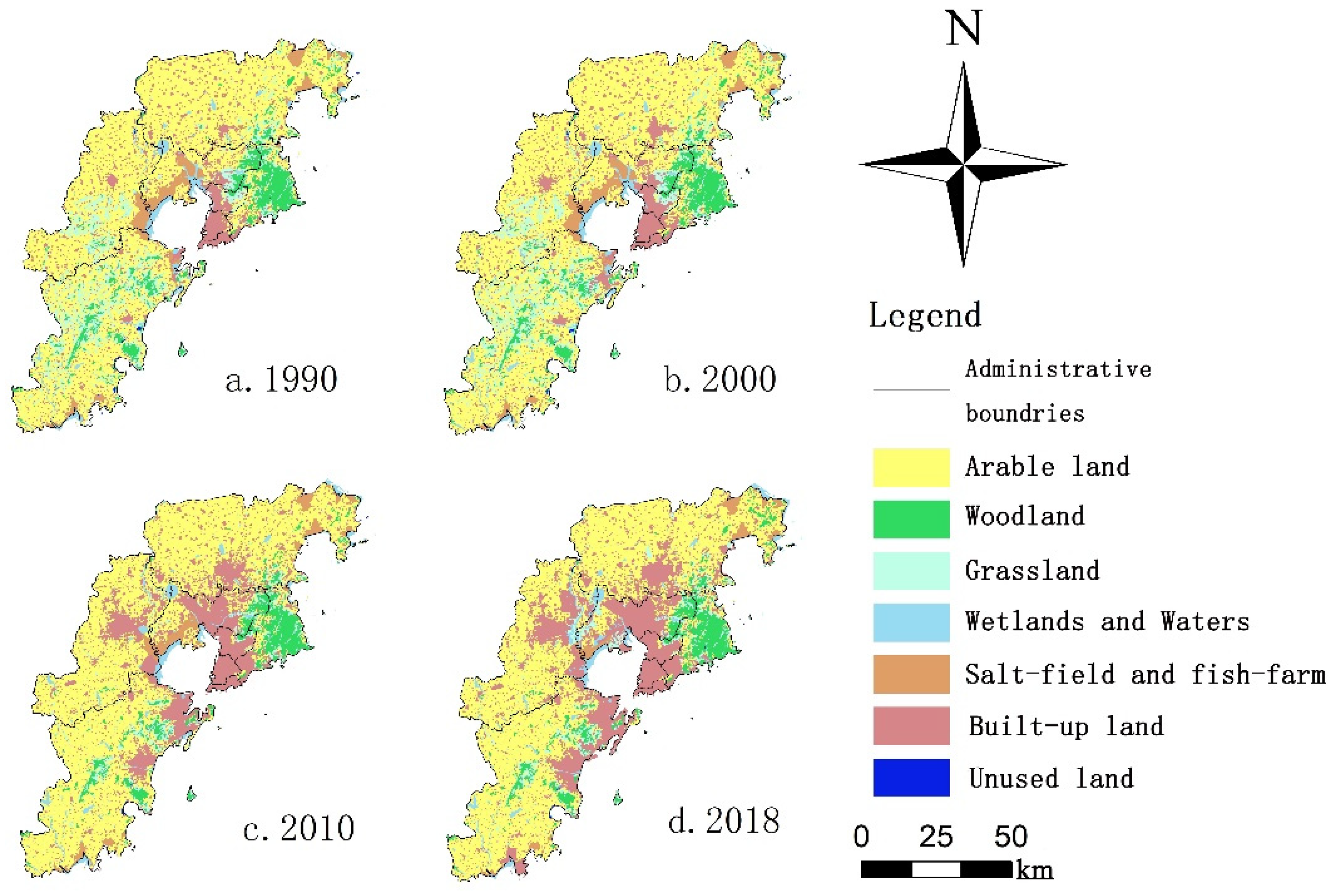
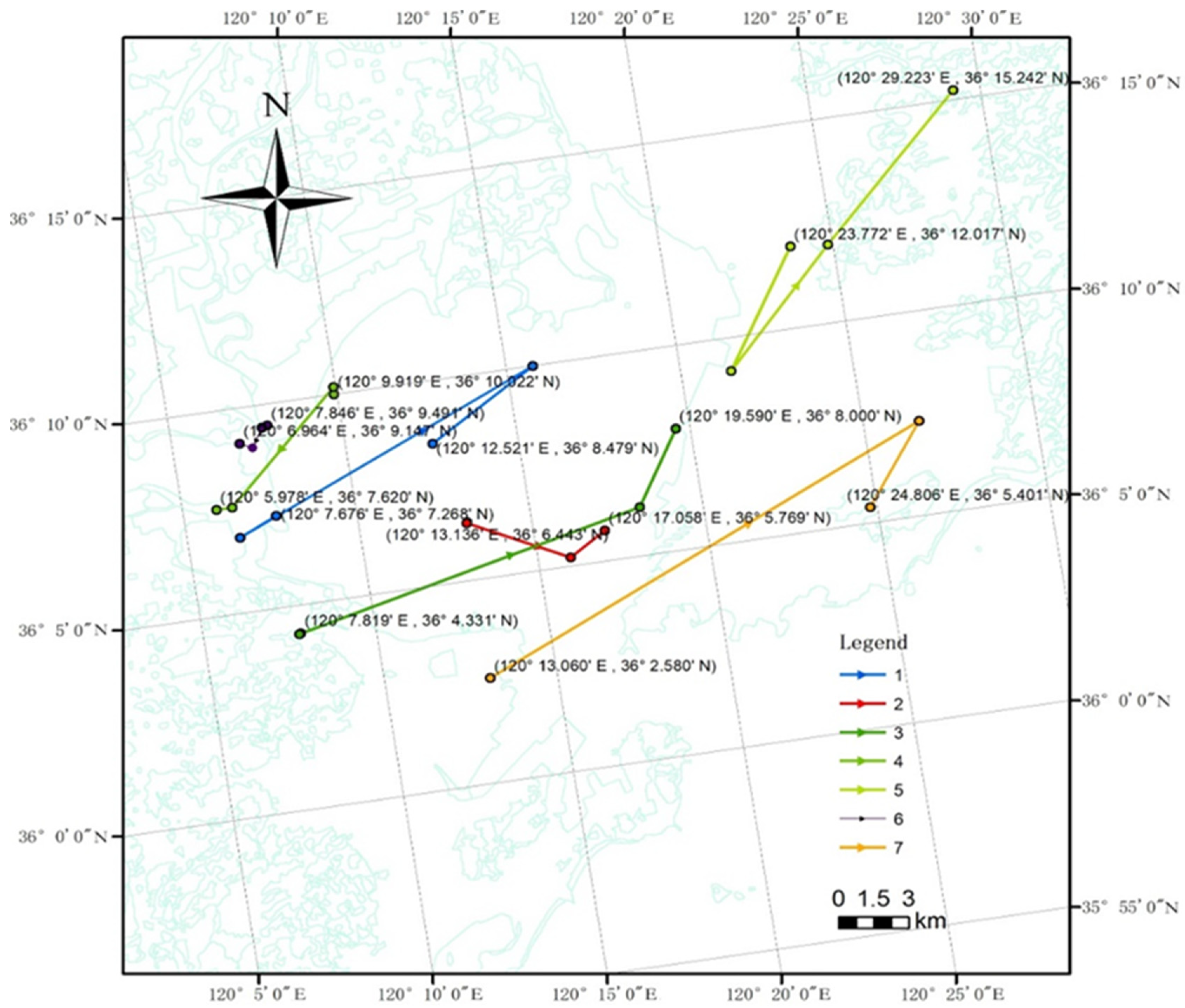
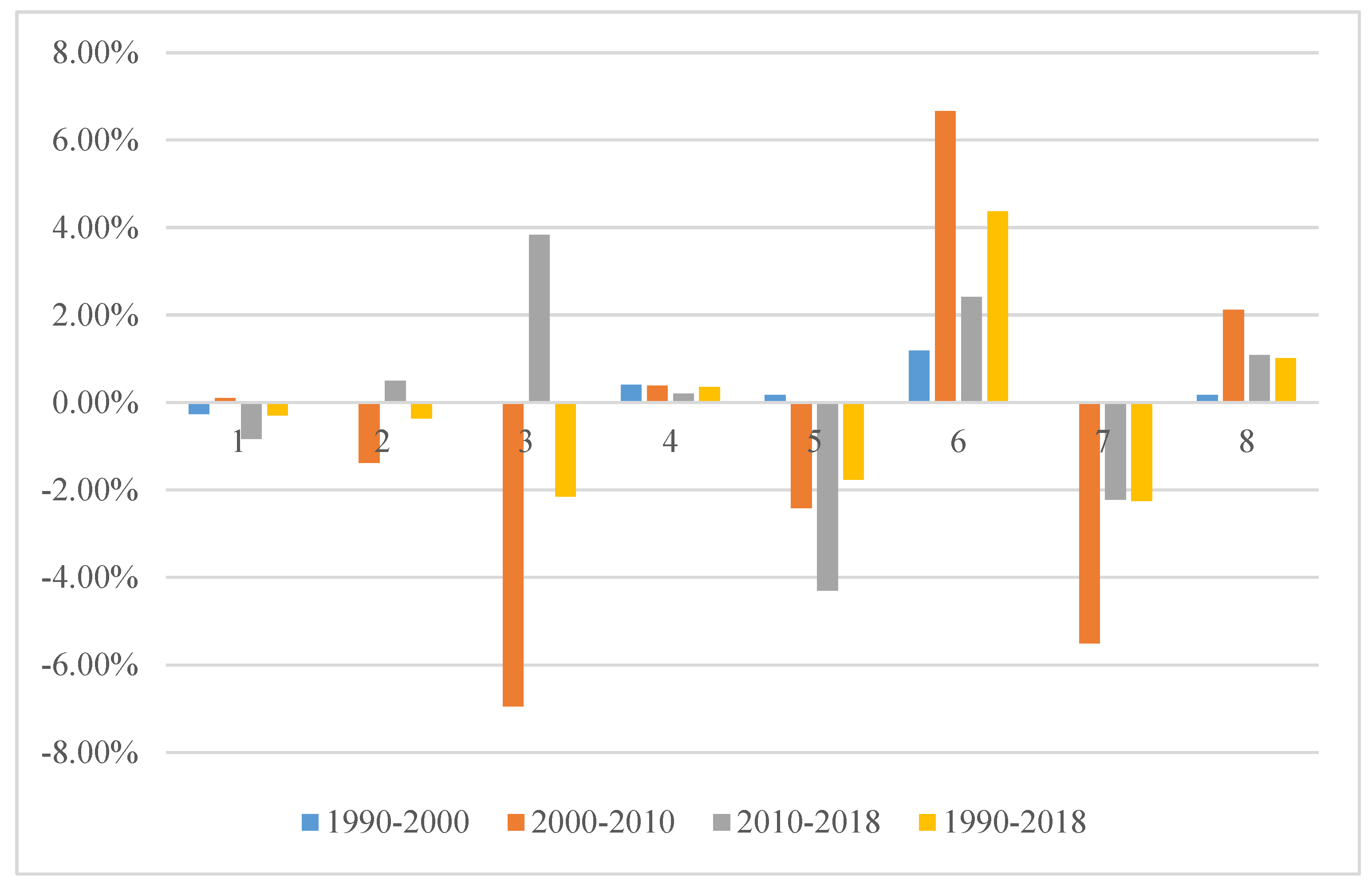
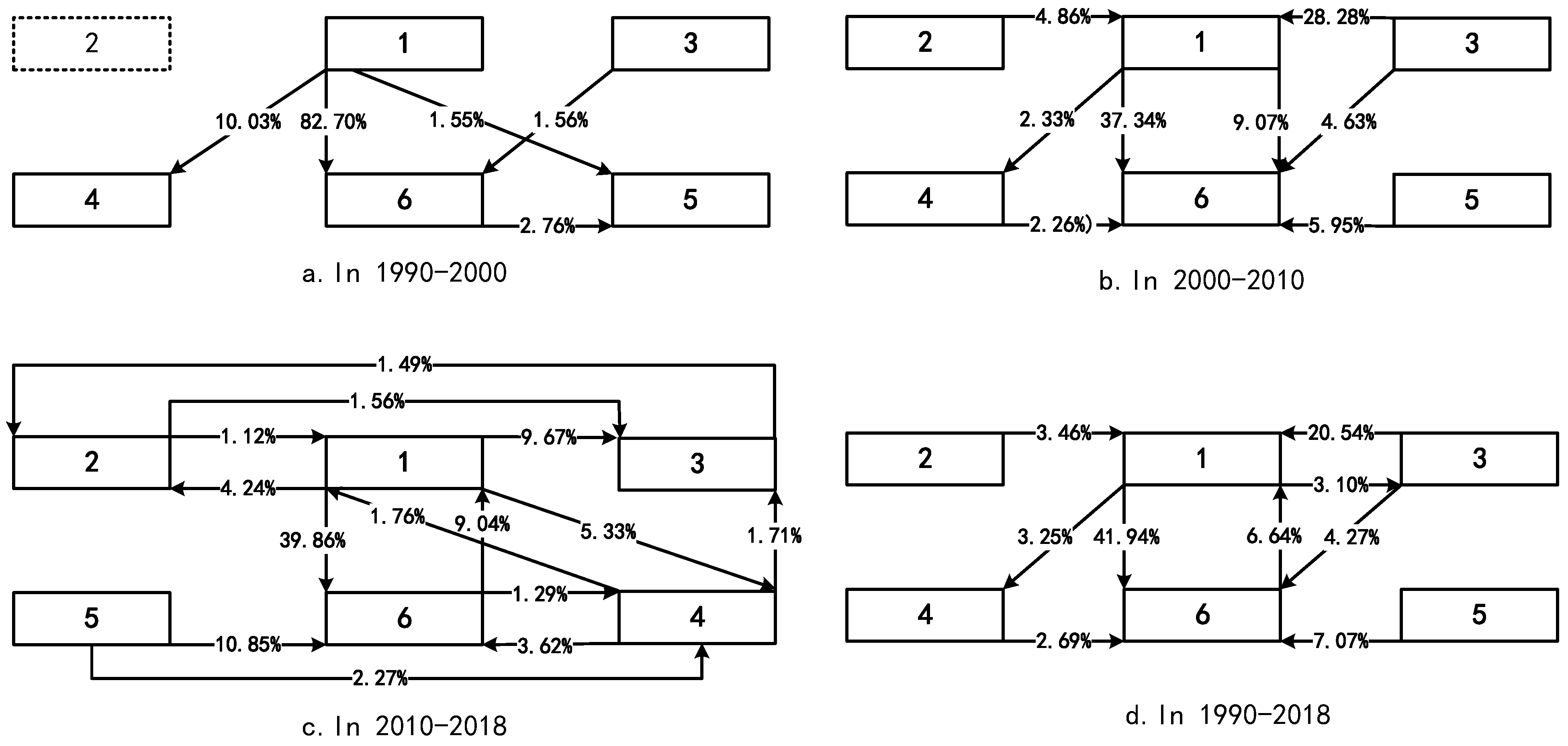
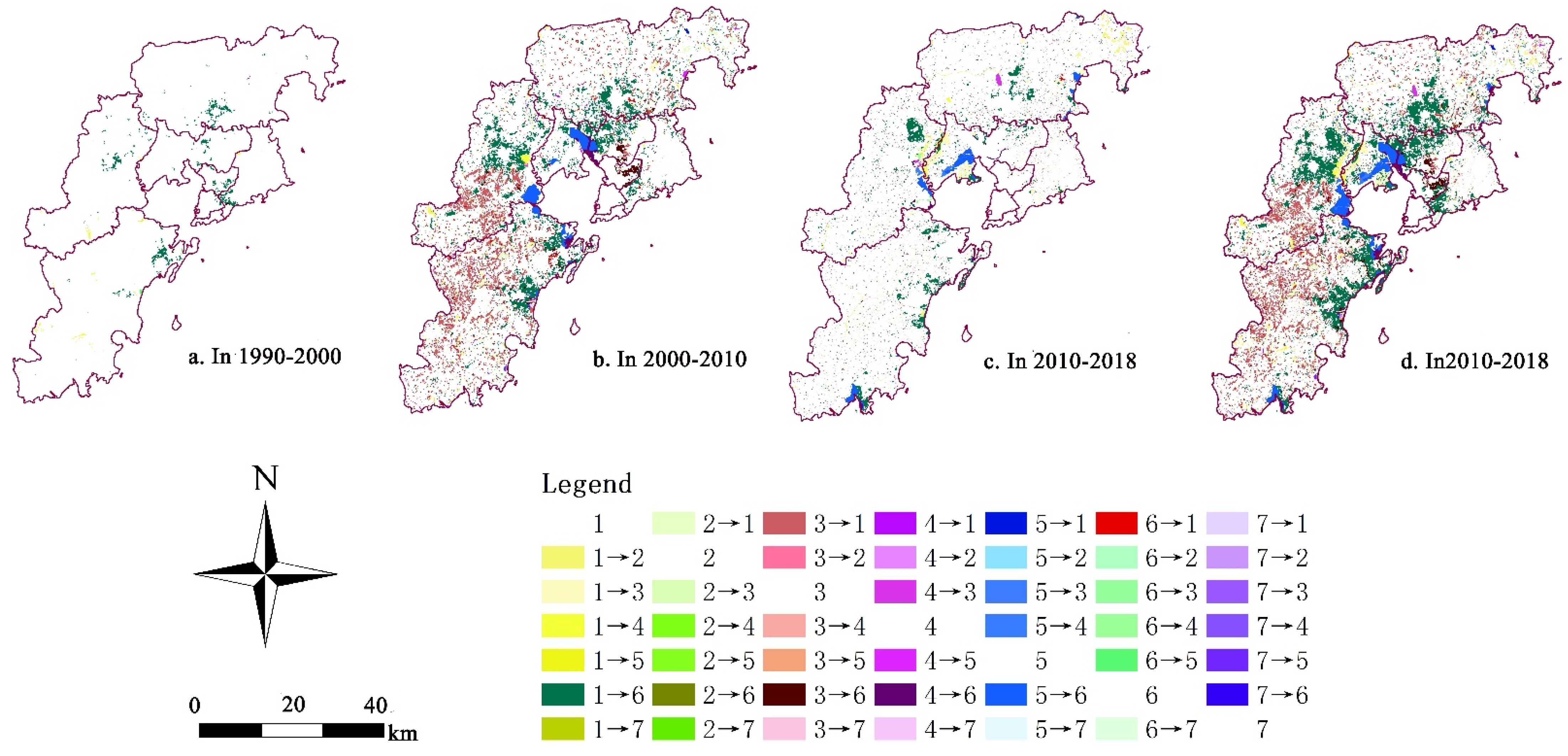
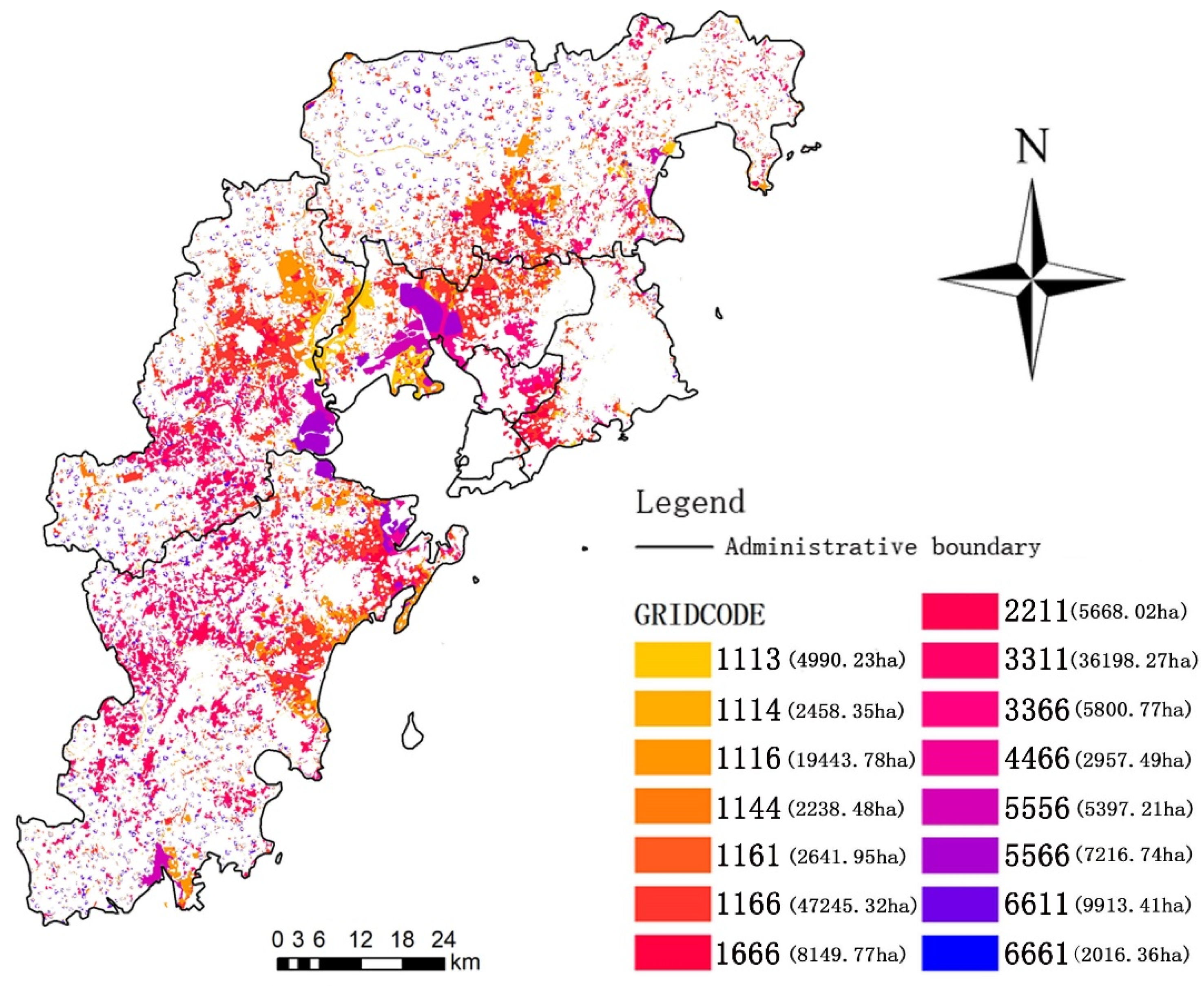

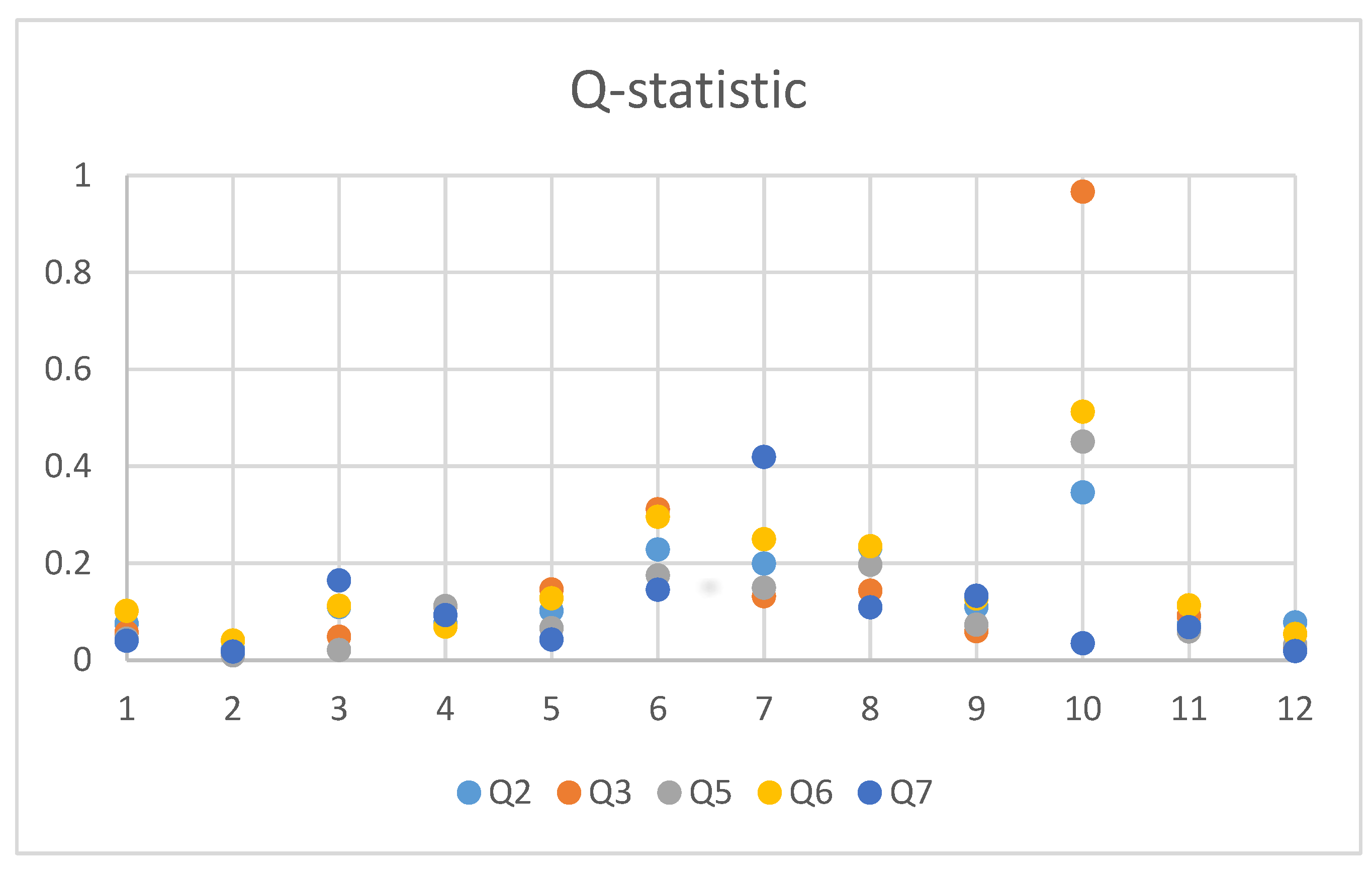
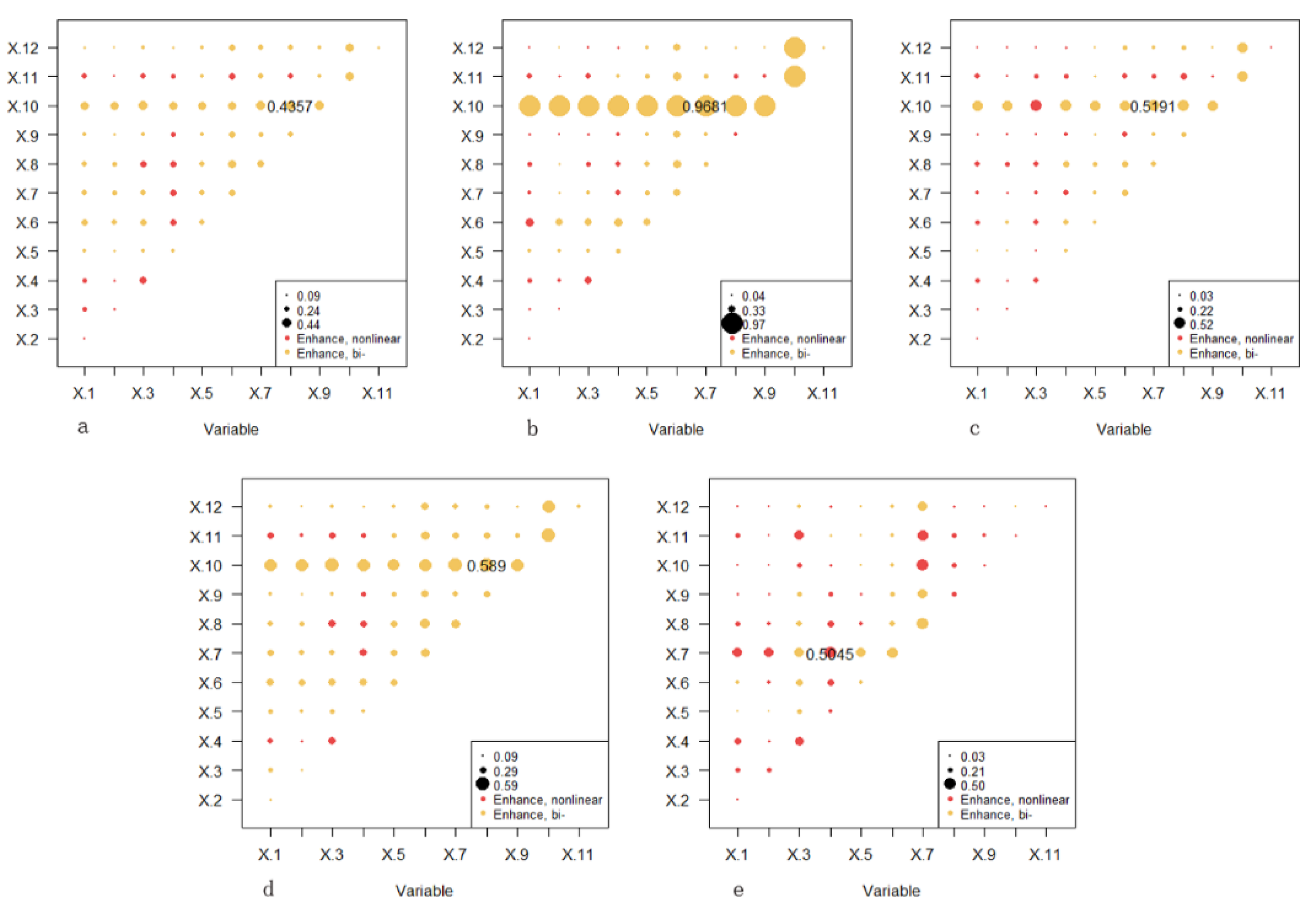
| The First-Level Type | The Secondary-Level Type | Reclassification Type | ||
|---|---|---|---|---|
| 1 | Arable land | 11, 12 | 1 | Arable land |
| 2 | Woodland | 21, 22, 23 | 2 | Woodland |
| 24 | 1 | Arable land | ||
| 3 | Grassland | 31, 32, 33 | 3 | Grassland |
| 4 | Water area | 41, 42, 43, 44, 45, 46 | 4 | Wetlands and Waters |
| 5 | Urban and rural residential land/industrial land | 51, 52, 53 | 6 | Built-up land |
| 6 | Unused land | 61, 62, 63, 65, 66, 67 | 7 | Unused land |
| 64 | 4 | Wetlands and Waters | ||
| 99 | Ocean | 99 | 4 | Wetlands and Waters |
| Number | Data Description | Data Source/Format 2 | The Data Unit |
|---|---|---|---|
| X1 | Distance from the mean center of the development zone | Google maps | Meter |
| X2 | Distance from rivers and lakes | www.openstreetmap.org | Meter |
| X3 | Distance from shore (coastal administrative boundary) | www.resdc.cn | Meter |
| X4 | Distance from cities and town land | The 30 m × 30 m grid of the CNLUCC data | Meter |
| X5 | Slope | The 30 m × 30 m grid of ASTER GDEM V3 | Percent |
| X6 | Elevation | The 30 m × 30 m grid of ASTER GDEM V3 | Meter |
| X7 | NDVI 1 in October 1998 | www.resdc.cn | No units of measure |
| X8 | GDP in 1995 | www.resdc.cn | Ten thousand yuan per square kilometer |
| X9 | Population difference between 1995 and 2015 | The 1 km × 1 km grid/www.resdc.cn | People per square kilometer |
| X10 | Type of ecological land | The 30 m × 30 m grid of the CNLUCC dataset | 21, 22, 23, 31, 32, 33, 41, 42, 43, 45, 45, 46 on CNLUCC dataset |
| X11 | Growth of fixed investment | www.shujuku.org | Ten thousand yuan |
| X12 | The density of road network | www.openstreetmap.org | Kilometer per square kilometer |
| Geographical Interaction Relationship | Interaction |
|---|---|
| Nonlinear weakening: Impacts of single variables are nonlinearly weakened by the interaction of two variables. | |
| Univariable weakening: Impacts of single variables are univariable weakened by the interaction. | |
| Bivariable enhancement: Impact of single variables are bi-variable enhanced by the interaction | |
| Independent: Impacts of variables are independent. | |
| Nonlinear enhancement: Impacts of variables are nonlinearly enhanced |
| Landscape Types | 1990a | 2000a | 2010a | 2018a | ||||
|---|---|---|---|---|---|---|---|---|
| Area/ha | Proportion | Area/ha | Proportion | Area/ha | Proportion | Area/ha | Proportion | |
| 1 | 393,809.58 | 61.93% | 383,685.39 | 60.33% | 387,605.25 | 60.73% | 361,905.21 | 56.49% |
| 2 | 48,124.35 | 7.57% | 48,123.9 | 7.57% | 41,474.61 | 6.50% | 43,127.46 | 6.73% |
| 3 | 65,403.36 | 10.29% | 65,205.81 | 10.25% | 19,870.92 | 3.11% | 25,958.16 | 4.05% |
| 4 | 25,633.08 | 4.03% | 26,693.28 | 4.20% | 27,732.06 | 4.35% | 28,165.14 | 4.40% |
| 5 | 26,351.37 | 4.14% | 26,791.02 | 4.21% | 20,321.28 | 3.18% | 13,326.12 | 2.08% |
| 6 | 75,513.78 | 11.88% | 84,483.36 | 13.28% | 140,744.79 | 22.05% | 167,824.89 | 26.19% |
| 7 | 1017.9 | 0.16% | 1018.08 | 0.16% | 456.93 | 0.07% | 375.66 | 0.06% |
| Total area | 635,853.42 | 636,000.84 | 638,205.84 | 640,682.64 | ||||
| Serial Number | Name | Main Trajectory Types |
|---|---|---|
| 1 | Outflow of built-up land | 6611, 6661, 1161 |
| 2 | Inflow of built-up land | 5556, 5566, 1116, 1166, 1666, 3366, 4466 |
| 3 | Outflow of ecological land | 3311, 2211, 3366, 4466 |
| 4 | Inflow of ecological land | 1144, 1114, 1113 |
| 5 | Outflow of arable land | 1116, 1666, 1144, 1161, 1114, 1113, 1166 |
| 6 | Inflow of arable land | 1161, 3361, 2211, 6611, 6661 |
| 7 | Outflow of salt-field and fish-farm | 5556, 5566 |
| 8 | Backflow of arable land | 1161 |
| TYPE | NP | LSI | AREA_MN | SHAPE_MN | FRAC_MN | CONTIG_MN | AI |
|---|---|---|---|---|---|---|---|
| 1 | 2019 | 48.9587 | 7.2452 | 1.0661 | 1.014 | 0.0758 | 19.3243 |
| 2 | 1959 | 46.1746 | 50.3849 | 1.1674 | 1.0234 | 0.1398 | 70.9811 |
| 3 | 726 | 42.1911 | 69.5813 | 1.4379 | 1.0487 | 0.2873 | 62.9769 |
| 4 | 542 | 23.0505 | 17.9262 | 1.093 | 1.0125 | 0.0604 | 54.129 |
| 5 | 2155 | 49.1554 | 40.4492 | 1.1528 | 1.0215 | 0.1231 | 67.0717 |
| 6 | 2264 | 56.6429 | 24.9435 | 1.1782 | 1.0238 | 0.1275 | 52.7002 |
| 7 | 28 | 7.708 | 449.2857 | 1.588 | 1.0566 | 0.5444 | 87.7287 |
| 8 | 600 | 24.8846 | 4.5067 | 1.0141 | 1.0031 | 0.0123 | 4.4615 |
Publisher’s Note: MDPI stays neutral with regard to jurisdictional claims in published maps and institutional affiliations. |
© 2021 by the authors. Licensee MDPI, Basel, Switzerland. This article is an open access article distributed under the terms and conditions of the Creative Commons Attribution (CC BY) license (https://creativecommons.org/licenses/by/4.0/).
Share and Cite
Wang, W.; Hu, Y.; Song, R.; Guo, Z. Analysis of the Spatiotemporal Heterogeneity of Various Landscape Processes and Their Driving Factors Based on the OPGD Model for the Jiaozhou Bay Coast Zone, China. Land 2022, 11, 7. https://doi.org/10.3390/land11010007
Wang W, Hu Y, Song R, Guo Z. Analysis of the Spatiotemporal Heterogeneity of Various Landscape Processes and Their Driving Factors Based on the OPGD Model for the Jiaozhou Bay Coast Zone, China. Land. 2022; 11(1):7. https://doi.org/10.3390/land11010007
Chicago/Turabian StyleWang, Wei, Yecui Hu, Rong Song, and Zelian Guo. 2022. "Analysis of the Spatiotemporal Heterogeneity of Various Landscape Processes and Their Driving Factors Based on the OPGD Model for the Jiaozhou Bay Coast Zone, China" Land 11, no. 1: 7. https://doi.org/10.3390/land11010007
APA StyleWang, W., Hu, Y., Song, R., & Guo, Z. (2022). Analysis of the Spatiotemporal Heterogeneity of Various Landscape Processes and Their Driving Factors Based on the OPGD Model for the Jiaozhou Bay Coast Zone, China. Land, 11(1), 7. https://doi.org/10.3390/land11010007





